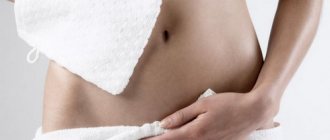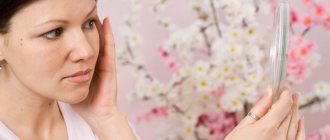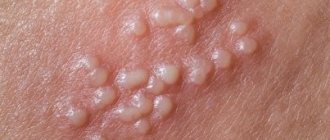Treatment of vulvitis with ointment is an integral component of the treatment regimen for inflammation of the mucous membrane of the external genital organs. Such drugs are safe for women and girls from the first days of life. Depending on the composition, medications have different effects, therefore, to prevent complications and further spread of infection, it is necessary to visit a doctor or show the child to a pediatric gynecologist. After carrying out diagnostic procedures, he will explain which ointments are suitable for treating inflammation.
Treatment of vulvitis with ointment
Reasons for the development of vulvitis in women
Vulvitis in a woman, the symptoms and treatment of which are largely determined by the cause of its occurrence, can develop due to many factors. The key is a general weakening of the body's immunity.
Causes of vulvitis:
- the presence in the body of an infectious disease that is sexually transmitted (chlamydia, mycoplasmosis, gonorrhea and others);
- presence of opportunistic bacteria;
- mechanical damage to the external genitalia (scratches, scratching);
- intestinal dysbiosis;
- helminthiases;
- insufficient adherence to personal intimate hygiene;
- diaper rash caused, among other things, by wearing tight synthetic underwear;
- long-term use of antibiotics, which negatively affect the pH environment of the vagina;
- allergies to pads, intimate area care products;
- the presence of fistulas of the rectum and urinary tract;
- presence of scabies mite or pubic louse;
- cystitis;
- hormonal and metabolic disorders, including diabetes.
Correctly determining the cause of vulvitis is the key to effective treatment.
Etiological factors for vulvitis
The disease is typical for children (up to 10 years) and mature women (after 50). The microflora of the genital organs includes many pathogenic bacteria that under normal conditions do not cause diseases (Escherichia coli, staphylococcus, streptococcus). Under certain circumstances, they multiply, causing inflammation.
The reasons for the violation are:
- genital infections;
- factors that reduce immunity;
- chronic endocrine diseases;
- malignant tumor;
- urethritis;
- fistula between adjacent structures;
- helminthiasis;
- allergies to body care products;
- mechanical impact on the clitoris and labia;
- failure to comply with personal hygiene rules;
- synthetic underwear;
- use of sanitary pads with fragrances;
- long swim.
Among the pathogens that cause vulvitis, there are not only bacteria from the cocci group, but also sexually transmitted infections (chlamydia, ureaplasma, mycoplasma), as well as fungi. The reasons for decreased immunity are the use of many drugs (antibiotics, hormonal, cytostatic drugs), and frequent colds.
Often the cause of inflammation is a violation of the microflora resulting from poor hygiene. Overweight women suffer from diaper rash, and if the discharge is rarely washed away, this provokes the development of vaginosis.
When the urethra becomes inflamed, pathogens multiply and spread to adjacent structures. Therefore, vulvitis is often associated with vaginitis and urethritis. Among the diseases that provoke the disorder are chronic pathologies (diabetes mellitus, thyrotoxicosis). Leukemia or malignant tumors of the genital organs also cause changes in the composition of the smear.
With frequent masturbation, mechanical damage to the mucous membrane occurs, and local protective factors are reduced. Douching, that is, the effect of antiseptic solutions on the vagina and external genitalia, causes dryness of the structure, which makes it easier to injure. Because of this, it is easier for pathogens to penetrate deep into the organ and cause inflammation.
It is important to note that soap is not suitable for intimate hygiene. It is necessary to use only special means
If you regularly remove natural lubricant from the surface, swim in an open body of water or visit a pool, this is fraught with the development of inflammatory processes. A humid environment promotes the growth of bacteria on the skin and mucous membranes.
Classification of pathology
Vulvitis is classified according to several criteria.
According to the clinical course, they are distinguished:
- Acute vulvitis. Duration – up to 1 month.
- Subacute vulvitis. Exacerbation alternates with phases of remission and lasts up to 3 months.
- Chronic vulvitis. Usually occurs during menopause. It is observed in women and girls who suffer from excess weight and diabetes.
Due to the development of vulvitis, they are classified:
- Primary. It usually appears in childhood and adolescence. The reason is injury to the mucous membrane.
- Secondary. It appears in women of reproductive age. Accompanies infectious, endocrine and other diseases.
According to the etiology of the disease, vulvitis is distinguished:
- Infectious. The cause of this disease is certain pathogenic microorganisms. Depending on them, infectious vulvitis is classified into specific, nonspecific and candidal. Specific vulvitis occurs under the influence of infections that are transmitted during sexual intercourse. These are gonorrhea, mycoplasmosis, ureaplasmosis, chlamydia, trichomoniasis. In the nonspecific form of the disease, the source is bacteria. These are staphylococcus, E. coli, streptococcus. Candidiasis vulvitis is caused by fungi of the Candida family.
- Non-infectious. It is mechanical and allergic in nature.
According to the nature of the pathology of the external genitalia, they are distinguished:
- Atrophic vulvitis. Characterized by thinning of the vulvar mucosa.
- Ulcerative vulvitis. There are ulcers on the external genitalia. Characteristic of the chronic form.
- Adhesive vulvitis. Usually develops in children. The main symptom is the fusion of the labia with each other.
What it is?
An acute inflammatory process that affects the external reproductive organs in girls is called vulvitis. This is a fairly common pathology in pediatric gynecology. The peak incidence occurs between the ages of two and ten years. In adolescence, there are practically no cases of vulvitis.
The external genitalia include the vagina, labia majora, labia minora, clitoris, and the external urethra. These organs are covered on the outside by mucous membranes lined with epithelial cells. Due to various reasons that provoke the disease, inflammation develops. It triggers a whole cascade of inflammatory reactions that provoke the appearance of uncomfortable symptoms in the baby.
Various provoking factors can lead to the development of vulvitis:
- Incorrect or overly active hygiene procedures. Daily washing with antiseptic agents can lead to changes in the pH of the vaginal environment. With regular use of such products, the mucous membrane of the external genital organs dries out excessively and becomes very susceptible to any infection.
- Infection with various helminths. When multiplying, these parasites produce a large amount of toxic products that can cause various irritations and redness in the genital area.
- Severe hypothermia. This leads to a decrease in the level of local immunity. Too low a body temperature contributes to impaired blood flow in the genitals, which causes an inflammatory process.
- Chronic diseases. Most often, pathologies of the gastrointestinal tract and endocrine system provoke inflammation in the reproductive organs. To eliminate unfavorable symptoms, it is necessary to prescribe treatment for the underlying chronic disease, which also provoked inflammation in the genitals.
- Traumatic. Babies often explore their bodies in the first years of life. During this, they may accidentally injure themselves. In adolescents, vulvitis may occur after using tampons during menstruation.
There are several types of vulvitis:
- Allergic. Occurs in various types of allergies. An atopic variant may occur in infants. In some cases, it occurs as a result of wearing diapers for a long time. Their long-term use leads to disruption of vaginal pH and more rapid development of various irritations.
- Bacterial. Occurs as a result of infection by bacteria. Most often these are staphylococci, streptococci, hemophilus influenzae, and aerobic microorganisms. They cause predominantly purulent forms of the disease. Treatment requires antibiotics.
- Viral. They develop as a result of infection with various types of viruses. The most common culprits of the disease are herpes. With a decrease in immunity, the baby develops inflammatory changes in the area of the external genitalia.
- Fungal. Most often develop as a result of candidiasis infection. They can also occur in frequently ill and weakened children. Quite often recorded in girls suffering from diabetes. To eliminate adverse symptoms, the prescription of antifungal drugs, mainly in the form of ointments or creams, is required.
- Traumatic. Occurs after various injuries. The mucous membranes of the external genitalia in childhood are very loose and easily injured. When a bacterial infection enters through various microdamages, a secondary infection can develop.
- Adhesive. Appear during chronic vulvitis. They occur only in cases where timely treatment was not provided. With this form, fusion of the labia occurs. Doctors consider impaired urination to be one of the first symptoms of this variant of the disease.
First signs and symptoms
Vulvitis in women, the symptoms and treatment of which are interrelated, causes enormous discomfort. The manifestations of this disease depend on the clinical course.
| Type of vulvitis | Main symptoms |
| Spicy | Signs: severe itching and burning in the perineum, significant redness of the vulva, swelling of the labia. There is pain during sexual intercourse, walking, and urination. Tiny plaque blisters may appear on the vulva, as well as ulcers and plaques. |
| Chronic | The signs are mild. Slight itching and slight redness of the vulva may bother you. Often women do not attach much importance to these symptoms. |
| Atrophic | The main manifestation of the disease is thinning of the mucous membrane of the clitoris, labia, and vulva. Possibly cracking of the skin and dryness. |
Diagnostics
At the first manifestations of vulvitis (itching or burning in the genital area), you should go to the doctor. Delayed treatment leads to serious consequences.
To diagnose the etiology of the disease, the following manipulations are performed:
- Questioning the patient and collecting anamnesis. The presence of gynecological diseases that can provoke the appearance of vulvitis is revealed.
- Visual examination of the external genitalia. The presence of bubbles, ulcers, and plaque on them is revealed. The degree of redness and swelling of the labia is noted. The condition of the skin, color, smell and thickness of vaginal discharge are assessed.
- Laboratory research:
- Vaginal smear to determine bacterial cultures. Using this method, the pathogen is determined, as well as its sensitivity to antibiotics.
- Stool analysis. Required to determine the presence of worms.
- General urine analysis. Allows you to detect the presence of cystitis.
- Polymerase chain reaction (PCR). Infections that are sexually transmitted are detected.
- Smear for cytology. Allows you to detect the presence of malignant cells.
- Colposcopy.
How to identify the disease
The task of diagnosis is to establish the cause of vulvitis and accurately determine the form of the disease. To do this, the patient turns to a gynecologist, who draws up an examination plan. First, the doctor interviews the patient and finds out what symptoms are bothering her. Next, an examination takes place on a chair, where the specialist has the opportunity to observe the nature of the manifestations, rashes, and discharge. After this, the gynecologist takes a smear from the mucous membrane. This allows you to clarify what flora is contained in it and whether it is sensitive to antibacterial drugs.
Additional studies are:
- general blood, urine and stool tests;
- identification of STI pathogens.
Determination of the presence of sexually transmitted diseases is carried out by taking a smear or conducting an immunological blood test. To exclude helminthiasis, it is necessary to conduct a study for the presence of worm eggs or visually identify parasites, which are often attached to pubic hair.
To determine the allergic nature of the disorder, a screening or immunological test is performed. Thanks to it, the exact type of dangerous component is established.
Treatment methods depending on the cause of the disease
Vulvitis in women, the symptoms and treatment of which are directly related to the cause of its occurrence, the so-called secondary vulvitis, is not difficult to heal.
To do this, you need to get rid of the accompanying illness.
- With trichomonas. The main goal of treatment is to get rid of Trichomonas. Antibacterial drugs Metronidazole, Metrogyl, Terzhinan are prescribed. Trichopolum is also effective. It is also prescribed for other genital tract infections (mycoplasmosis, ureaplasmosis, chlamydia). In addition to tablets, vaginal suppositories are also used (Terzhinan, Hexicon, McMirror, Neo-Penotran).
- For candidiasis. Candidiasis vulvitis resolves with the use of antifungal drugs. These include Nystatin, Fluconazole, Amphotericin. For mild cases of the disease, Pimafucin suppositories, Nizoral, Kanison, and Clotrimazole ointments are effective. Before applying ointments, it is necessary to treat the vulva with a 4% soda solution.
Vulvitis in women is a symptom of a disease. Treatment is selected depending on the pathogen - For allergies. When diagnosing allergic vulvitis, antiallergic drugs are prescribed. It is necessary to identify the allergen and refrain from using it. You should use hypoallergenic products to care for the intimate area.
- For nonspecific vulvitis. Nonspecific vulvitis is caused by opportunistic organisms. Antibacterial drugs and ointments (Tetracycline) are used to treat it. Amoxiclav (Augmentin) is effective for this vulvitis. If the causative agents are gonococci, then cephalosporin antibiotics are used as prescribed by the venereologist.
- With atrophic vulvitis. This type of vulvitis occurs mostly in the menopausal phase. It is caused by hormonal shifts throughout the body. Therefore, hormonal drugs are used in its treatment.
Causes
The external genitalia of little girls have certain anatomical and physiological features that make them less protected from infections:
- Girls' ovaries are still sleeping, not actively producing hormones, so vaginal immunity is weak and cannot resist infections.
- Girls' skin has a thin dermis and a loose outer layer of epidermis, so pathogenic microflora easily enters the body.
- Children have fewer skin glands than adults, and they do not work as actively, which also facilitates the penetration of microorganisms.
- The vaginal pH is higher than in adult women, and the levels of glycogen and lactobacilli are extremely low. It is easier for pathogenic microflora to reproduce in such conditions.
Vulvitis can be divided into infectious (inflammation is caused by a variety of microorganisms) and allergic (inflammation is a response to the appearance of an allergen).
Reasons for the development of infectious vulvitis:
- Vulvitis is often caused by nonspecific microflora - bacteria that always exist in the body and are activated under certain conditions, mainly when the immune system is weakened (after courses of antibiotics, long-term illnesses, in the presence of vitamin deficiency).
- Foreign bodies (grass, sand, small objects) that get into the vaginal area can cause inflammation.
- Vulvitis often affects girls who have chronic diseases (diabetes, disruptions in hormone production, diseases of the circulatory system, etc.).
- Infection through unwashed hands: a child may touch his genitals while exploring himself.
- Diaper rash while wearing diapers is a common cause of this disease.
- Parasitic infections, especially ascariasis, increase the likelihood of vulvitis several times: the accompanying itching forces the girl to scratch the perineum, which allows parasites to get from the anus to the genital area.
- Failure to comply with hygiene rules is one of the most common causes of the disease.
Reasons for the development of allergic vulvitis:
- the presence of allergies to any food products;
- use of hygiene products containing fragrances and dyes;
too frequent washing with the use of powders and ointments; wearing underwear made from synthetic materials.
A newborn baby can get vulvitis from the mother during childbirth or in utero.
Read about the symptoms and treatment of balanitis in a child here.
Ointments for vulvitis
Ointment therapy is an integral part of the treatment of vulvitis. It is especially effective in the initial stage. The advantage of ointments is their speed of action due to direct contact with inflamed areas. They must be applied strictly according to the instructions on skin pre-treated with an antiseptic.
The following ointments are used:
1. Antibacterial:
- Syntomycin ointment. The duration of the course is 7 – 10 days. It has anti-inflammatory, antibacterial, anesthetic properties.
- Triderm. Has side effects. In this regard, it is contraindicated for pregnant women in the first trimester, as well as people with individual intolerance to the components of the drug.
- Tetracycline ointment. Apply 1 – 2 times a day for a week. Contraindicated for pregnant women.
- Levosin. Effective for vulvitis with suppuration. It is used strictly as prescribed by the gynecologist.
- Erythromycin ointment. An effective antibacterial agent that suppresses bacteria resistant to other antibiotics. The duration of the course is determined by the doctor.
2. Fungicidal (antifungal):
- Pimafucin. Lubricate the skin 4 times a day until symptoms disappear and for another 4 days after. Suitable for pregnant and breastfeeding women. Has no side effects. The main active ingredient is natamycin. It is effective against fungi of the Candida family.
- Nystatin ointment. The duration of the course is 7 – 10 days, for chronic vulvitis – up to 1 month.
- Clotrimazole. Treatment continues for up to 2 weeks.
- Candide. Apply to the skin 2 – 3 times a day for 2 weeks. It has side effects and is therefore contraindicated in pregnant women.
3. Hormonal:
- Ovestin. Prescribed for atrophic vulvitis. Containing the female hormone estriol, it helps get rid of dry mucous membranes of the external genitalia caused by a lack of estrogen.
- Hydrocortisone ointment. The duration of the course is 1 – 2 weeks in accordance with the doctor’s recommendation. It is an anti-inflammatory agent.
4. Healing:
- Actovegin. The ointment is based on cattle blood. Has regenerating properties.
- Vaginorm S. Has immunomodulatory and protective properties. Balances microflora and pH levels. Prescribed for chronic vulvitis for prevention.
- Radevit. Anti-inflammatory and protective agent.
How to treat vulvitis
Bacterial and fungal vulvitis
After the examination, the doctor will tell you how to treat the identified vulvitis. Modern obstetric and gynecological practice uses only complex therapy of local and general action. Combination therapy allows you to quickly achieve a positive therapeutic effect and eliminate all manifestations of the disease. Medicines are selected individually for each patient, taking into account the form of vulvitis, the woman’s age, the individual characteristics of the body and drug intolerance. Antibacterial and antiviral drugs are prescribed for vulvitis of bacterial or viral etiology. Medicines are prescribed for a period of at least seven days. Anti-inflammatory ointment forms help get rid of inflammation in the external genital area. Ointments and creams also contain analgesic and soothing components, which quickly relieves discomfort in the groin.
Allergic vulvitis requires the appointment of a special hypoallergenic diet. To alleviate the condition, antihistamines are used, which reduce the manifestations of an allergic reaction on the skin and mucous membranes. All secondary vulvitis require treatment of the causative factor that led to the development of the disease. Thus, the treatment of atrophic vulvitis with severe estrogen deficiency involves the prescription of synthetic estrogen-containing drugs. Other hormonal disorders are treated by prescribing hormonal drugs in optimal dosages.
Treatment of inflammatory diseases of the genital organs requires compliance with sexual rest during the course of pharmacotherapy. If a sexually transmitted infection is identified, the sexual partner must also be treated.
Treatment of vulvitis usually takes place at home in most patients; only in case of complications, therapy can be carried out in an inpatient setting. In exceptional cases, treatment of complicated adhesive vulvitis in girls requires surgical intervention. After the course of therapy, additional examination and repeated laboratory control are carried out.
Ointments
Ointments are prescribed for vulvitis in women in order to speed up the treatment process and relieve the patient from painful discomfort. Most of them contain several antiseptic, analgesic and anti-inflammatory components. Ointments and creams consist of antibacterial and antiviral medicinal substances that affect the focus of the infectious process and destroy pathogenic agents. Common and effective means are the following:
- Clotrimazole ointment;
- Candide cream (against candidomycosis);
- Flucinar (for allergic forms);
- Triderm;
- Metrogil;
- Tetracycline and erythromycin ointments.
Ointments for vulvitis are applied to clean genitals in a thin, even layer 3-4 times a day. The average duration of pharmacotherapy with ointments and creams is approximately ten days.
Candles
Vulvitis is treated at home using vaginal or rectal suppositories. Suppositories contain medicinal substances that directly act on the source of inflammation. The most common and effective medications are Hexicon, Mikozhinaks, Terzhinan, Polizhinaks, Ginezol, Clotrimazole. The drugs are administered at night after a hygienic shower.
Tablets and vitamins
The main tablet drugs are antibacterial, antiviral, and antimycotic drugs. Antibiotics are used for inflammatory processes caused by microorganisms. To treat most sexually transmitted diseases, a course of antibiotic therapy is also prescribed. The drugs of choice are tablets from several pharmacological groups: macrolides, tetracyclines, cephalosporins, fluoroquinolones and protected penicillins. These medications are active against most pathogens, which makes them effective for the treatment of bacterial vaginitis. For candidomycosis, Flucanazole is used, and for herpetic vulvovaginitis, Acyclovir and its analogues are prescribed.
For faster recovery, all patients are prescribed vitamin and mineral complexes. Vitamins stimulate the processes of regeneration and repair of damaged tissues, shortening the healing period of the mucous membrane.
Candles
Suppositories are a good remedy for secondary vulvitis. They are inserted into the vagina, thus directly affecting the mucous membrane of the internal genital organs. Suppositories, like ointments, are selected depending on the etiology of the disease.
They can be:
- antibacterial (Trichopol);
- hormonal;
- antifungal (Pimafucin, Fluconazole);
- protective (for the healing of the epithelium - sea buckthorn and ichthyol suppositories; Bifidumbacterin, Bifilak are used to restore the microflora).
Candles can only be used strictly as prescribed by a doctor. If itching and irritation of the mucous membrane occurs, treatment should be stopped.
Suppositories are contraindicated during menstruation, pregnant, breastfeeding women and people with individual intolerance.
Antibiotic drugs
Antibiotics are prescribed only for vulvitis caused by opportunistic organisms. They are not effective against diseases that are transmitted through sexual intercourse, such as candidiasis. Antibiotic drugs are selected depending on the pathogens, which are determined by laboratory analysis of a vaginal smear for microflora:
- If gonococci are present, cephalosporin antibiotics are prescribed.
- In the presence of trichomonas, use Metronidazole, Tinidazole, Ornidazole.
- For mycoplasma, ureaplasma, and chlamydia, broad-spectrum antibiotics are prescribed.
- Terzhinan helps a lot with mixed vulvitis.
Treatment of vulvitis using folk remedies
Vulvitis in women, the symptoms and drug treatment of which are described above, can be alleviated with folk remedies. In the case of primary vulvitis, using folk recipes you can completely get rid of this disease. They are also effective for preventive purposes and at the initial stage.
Various treatment methods are used:
- ingestion of various herbal infusions;
- douching;
- baths;
- use of tampons.
The advantage of treatment with folk remedies is that the risk of complications is low compared to drug therapy.
When carrying out treatment procedures, you should pay attention to some nuances:
- Douching and insertion of tampons into the vagina are carried out as carefully as possible to avoid injury to the mucous membrane.
- After baths, be sure to completely dry the vulva.
Treatment
After determining the nature of the disease, treatment at home is usually prescribed. The timing and rules for conducting it are determined by the pediatric gynecologist observing the child. He (if necessary) will provide parents with advice and explanations regarding individual medications and hygiene procedures.
Common to all types of the disease is the treatment of the genitals.
The following means are used:
Even more interesting:
I infected my boyfriend with HPV
The ovary is enlarged and painful
- Compresses and lotions based on eucalyptus infusion.
- Baths with the addition of manganese or certain herbal infusions (calendula, chamomile or string).
- Antiseptic solutions for washing.
- Antibacterial ointments and creams, which are used to lubricate the vaginal vestibule before bedtime (zinc ointment helps a lot here).
- Immunomodulators, multivitamins and eubiotics (probiotics), which act as a general strengthening therapy.
If itching prevents the baby from sleeping, sleeping pills are used. Antibiotics for vulvitis are prescribed, as a rule, when the disease is already pronounced. To dry the skin and remove as many toxins as possible, products such as hydrocortisone or syntomycin ointment are prescribed. However, you shouldn’t get too carried away with them either, because if you overdo it with antibiotics, you will also do your child a disservice.
If the disease is allergic in nature, erythromycin ointment alone will clearly not help. To completely defeat the disease, it is necessary to treat the disease with specially selected antihistamines, as well as strictly adhere to the diet prescribed by the doctor.
When acute or chronic vulvitis is caused by other diseases, initially all efforts are directed towards eliminating them. In the case of bacterial vulvitis, the girl is prescribed antibacterial and accompanying drugs (for example, Miramistin), which reduce the resistance of harmful microorganisms to antibacterial therapy; in case of fungal vulvitis, antifungal agents are prescribed, which can be used not only externally, but also internally.
Also, this set of measures often includes sanitation of the source of infection, removal of a foreign body (if vulvovaginitis occurs), deworming (for helminthic infestation) and a number of other procedures.
Drink
The strongest factor in the occurrence of vulvitis is a decrease in a woman’s immunity.
To strengthen it, various herbal teas and decoctions are used:
- Chamomile tea. It has immunomodulatory and anti-inflammatory properties. To prepare it, 1 tsp. dried flowers must be brewed in a glass of boiling water. Take 3 times a day, 50 ml.
- White acacia decoction. 1 tbsp. The dried plant must be boiled for 5 minutes. over low heat in 0.5 liters of water. The maximum dose per day is 3 glasses.
- A decoction of coltsfoot, sweet clover, and wintergreen. 1 tbsp. The dried mixture should be poured with a glass of boiling water, kept on low heat for 15 minutes, and left for a couple of hours. Take 3 times a day, 1 tbsp. after eating for 14 days.
Products for baths, douching, irrigation
Baths and douching perfectly soothe the skin and mucous membranes of the genital organs in women.
In addition, they have antiseptic, antibacterial, anti-inflammatory properties:
- Potassium permanganate. The most common anti-inflammatory agent for baths. For this purpose, dissolve potassium permanganate in water in such an amount that a light pink liquid is formed. The frequency of taking a bath is 2 times a day for half an hour.
- Oak bark decoction. For 2 liters of water you need to take 30 g of crushed oak bark and boil for 10 minutes. Take a bath 3 times a day for 5 minutes.
- Chamomile decoction. Has soothing, anti-inflammatory properties. 3 tbsp. l. flowers should be brewed in 1 liter of boiling water and left for several hours.
- For douching, use a decoction of a mixture of herbs: 1 tsp. chamomile flowers, 3 tsp. nettle, 1 tsp. crushed oak bark, 2 tbsp. bird knotweed. This mixture must be poured into 1 liter of boiling water, left to infuse and strain. When preparing a solution for douching, take 2 tablespoons per 1 liter of water. of this decoction. The procedure should be carried out 2 times a day.
Therapeutic tampons
Tampons are used for treatment:
- From the juice of wintergreen. It is necessary to grind the fresh herb and squeeze the juice out of it. Moisten a tampon with it and insert it into the vagina. The procedure is carried out 7 times every other day.
- From a decoction of sage and wormwood. 20 g of the dry mixture should be poured with a glass of boiling water and kept in a water bath for several minutes. Then cool and strain. A tampon soaked in this decoction should be inserted into the vagina at night for a week.
- An effective remedy is sea buckthorn oil. It has antibacterial, regenerating, and general strengthening properties.
- A tampon dipped in liquid honey helps well with vulvitis. It is immersed in the vagina for the whole day. Course duration – 2 weeks.
LiveAcademy
Therapeutic tampons
To get rid of the unpleasant manifestations of vulvitis during an exacerbation, you can use medicated tampons. Sage and wormwood have an effective effect. To prepare the decoction you will need 20 g of dry herb. It is added to 150 ml of water and boiled in a water bath. Afterwards, the liquid must be cooled and strained. For a tampon, take a sterile bandage, which is moistened in a decoction and inserted into the vagina. The procedure is carried out before bedtime for 7 days.
A powerful remedy for vulvitis is freshly squeezed juice from wintergreen leaves. The grass must be washed, cut into small pieces and ground. The juice is squeezed out of the resulting mass and the tampon is soaked with it. The procedure is carried out every other day for 14 days.
Sea buckthorn oil is suitable for the treatment of vulvitis due to its softening and regenerating properties. In addition, the product contains a large amount of vitamins and fights bacteria. It is suitable for wetting tampons and for external use. Sea buckthorn oil can also be used for treatment. Lotions and compresses during vulvitis will eliminate itching and irritation, but they are prohibited in case of erosion and damage, as they can lead to maceration of the vulva.
When treating vulvitis, liquid honey is used, into which a tampon is immersed. Afterwards it is inserted into the vagina for 12 hours. The procedure is carried out over 2 weeks. Before starting home therapy, you should consult with a specialist who will make a diagnosis and determine the need for procedures. In most cases, complex treatment is carried out, combining traditional recipes with medication.
Use of folk remedies: douching and baths
Traditional medicine offers many ways to treat vulvitis at home, using herbal baths, irrigation, douching and other methods:
- For baths and douching, prepare decoctions based on oak bark - take 2 large spoons of bark per 2 liters of liquid, bring the mixture to a boil and cook over low heat for another 10 minutes. The product is cooled, filtered, and then used.
- An effective remedy is made from the roots of erect perstacha. Pour 200 ml of boiling water over a large spoon of the plant and keep it on low heat for another 10 minutes. Then the composition is cooled, filtered, and boiling water is added to a liter. Douching is done in the morning and evening.
- You can use chamomile - take a large spoonful of flowers per liter of boiled water and leave the composition until it cools, after which it is filtered and used for douching and irrigation.
- In 200 ml of boiled water you can brew round-leaved wintergreen in the amount of two small spoons. Leave the product for 2 hours, then filter and use.
- Take the peels from four onions per 500 ml of water, bring the mixture to a boil, keep on the fire for another 15 minutes, leave to cool, and filter.
- Marigold flowers are brewed as follows: take a large spoonful of the plant per liter of boiled water. Leave until the liquid turns golden brown.
General information
Vulvitis is an acute or chronic inflammation of a woman’s external genitalia. As the disease develops, infection and subsequent inflammation of the labia majora and minora, clitoris, hymen, vagina and its glands are noted. ICD-10 diseases – N76 (other inflammatory diseases of the vagina and vulva).
Inflammation of the labia and other external genitalia develops due to the influence of a number of factors. The development of the disease is often associated with a deterioration of local immunity, as well as with damage to the tissues of the skin and mucous membrane. Inflammatory processes often develop under the influence of opportunistic organisms - E. coli, yeast, streptococci and staphylococci. In more rare cases, the disease is caused by other pathogens. In girls, vulvitis is often combined with inflammation of the vagina - this condition is called vulvovaginitis.
How vulvitis manifests itself, what methods of treatment and prevention should be used will be discussed in this article.
Herbs for internal use
Helps against illness:
- A collection of Rhodiola rosea and Borage. This collection serves as a general tonic and improves immunity. To prepare the medicine, use 1 tbsp. Brew 1 tsp boiling water. a mixture of these herbs, taken in equal proportions, and leave for a couple of hours. Take 3 times a day. Daily dose – 1 glass. Duration of treatment – 1 month.
- To increase the protective properties of the body and for vitaminization purposes, you can take 1 tsp. freshly squeezed nettle juice 3 times a day.
- A collection of chamomile, birdweed, and nettle has a soothing and anti-inflammatory quality. 20 g of the collection should be poured with 200 ml of boiled water. Close the container with a tight lid and wrap it with a towel. Leave this way for several hours. You need to take the infusion for 2 weeks, 3 times a day, 60 ml.
- St. John's wort. In 1 tbsp. Boiling water must be brewed 1 tbsp. dried flowers. Take 3 tbsp. 3 times a day.
This medicine has excellent antibiotic and anti-inflammatory properties.
Forecast
With proper and timely treatment, vulvitis goes away without complications or consequences.
But if a woman does not immediately consult a doctor, but begins self-medication, serious consequences are possible:
- Formation of cysts and abscesses.
- Chronic ulcers of the vulva.
- Fusion of the labia.
- Deformation of the vulva.
- The appearance of scars on the mucous membrane.
- The inflammatory process can spread to the internal genital organs and cause:
- endometritis;
- vaginitis;
- infertility;
- cervicitis and other diseases.
7. On the psychological side, a woman can be negatively affected by a lack of sex life.
Vulvitis in women can be either a consequence of a certain disease or can occur on its own due to injury to the mucous membrane of the external genitalia. Based on the symptoms, it is possible to suggest the cause of the disease, but for an accurate determination, you should undergo a full examination by a doctor. Under no circumstances should you self-medicate.
Wrongly chosen drugs can only harm the body. At the initial stage of the development of the disease, as well as for prevention purposes, you can use folk remedies. They perfectly relieve irritation and itching of the vulva and do not cause complications. But you shouldn’t put off going to the doctor.
Article design: Mila Friedan
https://youtu.be/4FTaM5AbSnk
Prevention
You can reduce the risk of developing an inflammatory process by following simple rules such as:
- the use of contraceptives, which are selected together with the attending physician;
- undergoing regular examinations by a gynecologist;
- exclusion of casual sexual relations;
- maintaining intimate hygiene;
- timely and correct treatment of infectious lesions;
- wearing underwear of a suitable size, choosing natural hypoallergenic fabrics;
- limiting the use of hygiene products with strong aromatic fragrances and artificial colors;
- refusal of frequent douching in order to preserve the natural microflora of the vagina;
- use antibiotics only on the recommendation of a doctor, take probiotics.
Vulvovaginitis is not a serious disease, but it causes severe discomfort. With timely diagnosis and proper treatment, it goes away quickly. When the first symptoms appear, a woman or girl is advised to see a doctor. Self-therapy at home is also not worth it to prevent complications.











